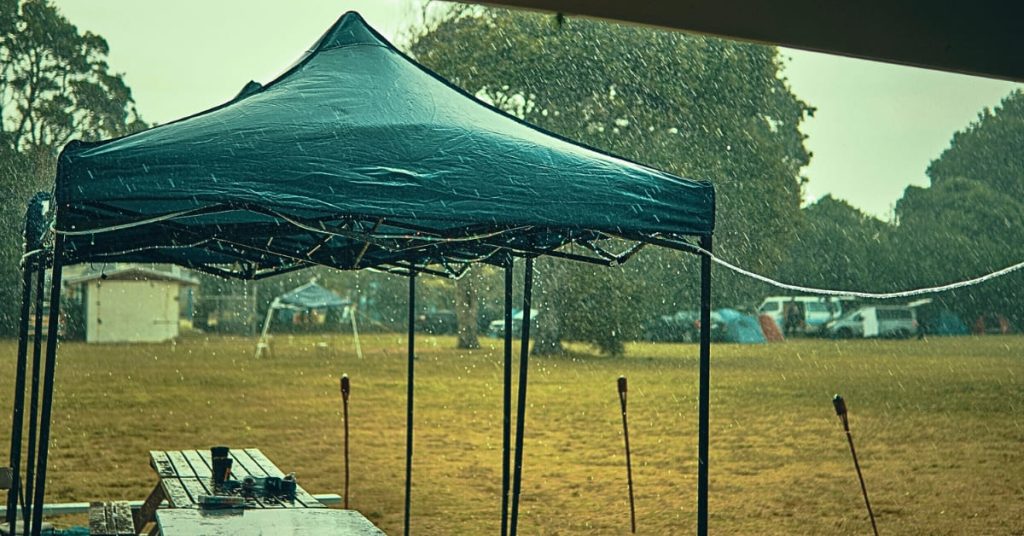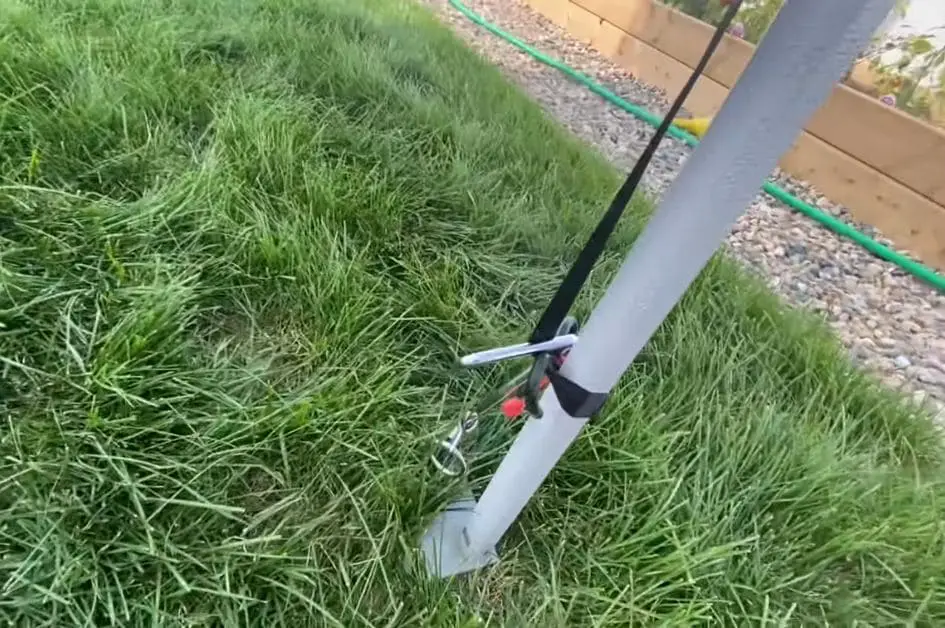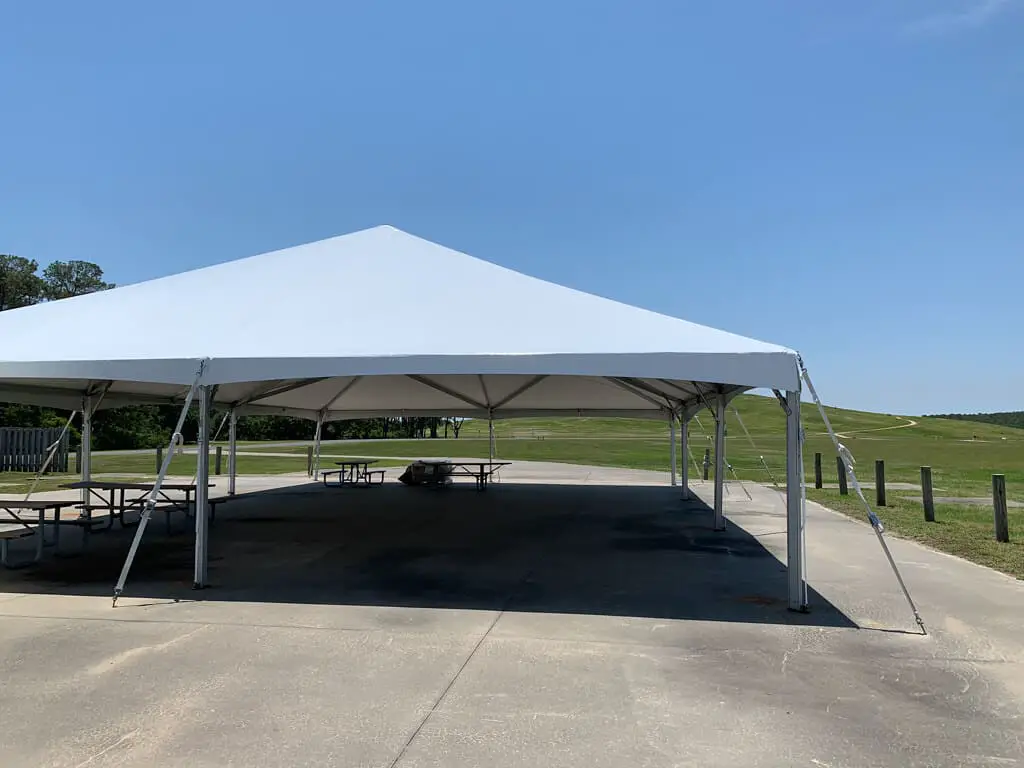Pop-up gazebos are popular outdoor structures that provide shade and shelter during outdoor events such as camping, barbeques, and garden parties. They are designed to be lightweight and easy to set up, making them convenient for outdoor use.
However, a common concern among users is how much wind a pop-up gazebo can withstand.
Wind can pose a significant threat to pop-up gazebos, especially if they are not secured correctly or if the wind speeds are high. Excessive wind can cause the gazebo to collapse, damaging or injuring people nearby.
Therefore, it is essential to understand the wind resistance capabilities of a pop-up gazebo to ensure its safe use.
The amount of wind a pop-up gazebo can withstand depends on various factors, such as its size, material, design, and the level of wind protection provided.
In this article, we will explore these factors and provide you with information on how to determine the wind resistance of your pop-up gazebo, as well as tips on how to secure it during windy conditions.
How much wind can a pop up gazebo withstand: The wind resistance of a pop-up gazebo varies depending on its construction and quality. Generally, they can withstand light to moderate winds of around 10-20 mph, but it is best to consult the manufacturer’s specifications for precise wind resistance information.
How much wind can a pop up gazebo withstand?

A pop-up gazebo is a temporary outdoor shelter that can protect you from the sun and light rain. But how much wind can a pop-up gazebo withstand before it becomes unstable or collapses? This is determined by its wind rating, which is a measure of its ability to resist wind.
The wind rating of a pop-up gazebo depends on several factors such as the materials used to make it, its size, and its design.
To ensure your pop-up gazebo can withstand the wind in your location, you should choose a model with a wind rating that matches the wind conditions in your area.
Additionally, you can increase your pop-up gazebo’s wind resistance by properly anchoring it, adding weight to it, and taking it down during periods of high wind.
Factors affecting wind resistance
Wind resistance is a critical factor to consider when purchasing a pop-up gazebo. It is important to understand the different factors that contribute to the wind resistance of a pop-up gazebo.
we will discuss the materials used in the construction of the pop-up gazebo, the design of the pop-up gazebo, and the anchoring methods used to secure the pop-up gazebo.
Materials used in the construction of the pop-up gazebo:
The materials used in the construction of the pop-up gazebo significantly impact its wind resistance. The most common materials used in the construction of pop-up gazebos include steel, aluminum, and plastic. Steel is a strong and durable material that provides excellent wind resistance.
However, steel can also be heavy, making it difficult to move and transport. Aluminum is another popular material used in pop-up gazebo construction.
It is lighter than steel, making it easier to transport, but it may not be as strong. Plastic is also used in pop-up gazebo construction, but it is not as durable as steel or aluminum, and it may not provide sufficient wind resistance.
Design of the pop-up gazebo:
The design of the pop-up gazebo also plays a critical role in its wind resistance. The shape of the gazebo can have a significant impact on how it handles the wind.
Some pop-up gazebos have a rounded design that allows the wind to flow smoothly over the top of the gazebo.
This can help to reduce the wind resistance and prevent the gazebo from toppling over. Other pop up gazebos have a flat roof design, which can create more wind resistance and increase the risk of the gazebo being damaged or toppled over by strong winds.
Another factor to consider is the size of the pop up gazebo. A larger gazebo will have more surface area, making it more susceptible to wind damage.
It is important to consider the wind rating of the pop-up gazebo when selecting a size. A smaller gazebo may be more suitable for windy conditions, while a larger gazebo may be better suited for calmer weather.
Anchoring methods used to secure the pop-up gazebo:

The anchoring methods for securing the pop-up gazebo are also crucial for its wind resistance. Most pop-up gazebos come with stakes to secure the gazebo to the ground.
However, these stakes may not be sufficient for windy conditions.
It is important to use additional anchoring methods to secure the gazebo, such as sandbags or weights. This can help to keep the gazebo in place during strong winds.
Another option for anchoring the pop up gazebo is to use guy ropes. Guy ropes are ropes that are attached to the gazebo and then anchored to the ground.
This helps to provide additional stability and prevent the gazebo from toppling over during strong winds.
In addition to the anchoring methods used, it is also essential to consider the location of the pop-up gazebo. If the gazebo is located in an area that is prone to high winds, such as a coastal area, it may be necessary to take additional precautions to secure the gazebo.
This may include using additional anchoring methods or taking down the gazebo during periods of high wind.
Wind ratings for pop up gazebos
Pop-up gazebos are versatile outdoor structures that provide shelter and shade during outdoor events such as picnics, camping, and parties. One of the most important considerations when purchasing a pop-up gazebo is its wind rating.
Understanding wind ratings and what they mean can help you select a pop-up gazebo that is appropriate for your location and weather conditions.
Explanation of wind ratings and what they mean
Wind rating is a measure of how much wind a pop-up gazebo can withstand before it becomes unstable or collapses. Wind ratings are expressed in miles per hour (mph) or meters per second (m/s), indicating the maximum wind speed the gazebo can handle.
The wind rating of a pop-up gazebo depends on several factors, such as the size, shape, and materials used to construct it.
When selecting a pop-up gazebo, it is essential to consider the wind rating to ensure its stability and safety during use.
A pop-up gazebo with a higher wind rating can withstand stronger winds without collapsing, while a gazebo with a lower wind rating may be more prone to damage or collapse in windy conditions.
Common wind ratings for pop-up gazebos

There are various wind ratings for pop-up gazebos, and the specific rating will depend on the manufacturer and model.
Here are some common wind ratings that you may come across when shopping for a pop-up gazebo:
- 20 mph (32 km/h) – Gazebos with this wind rating is suitable for mild wind conditions. They may not be suitable for use in areas with frequent or strong winds.
- 30 mph (48 km/h) – Gazebos with this wind rating can withstand moderate winds and are suitable for use in areas with occasional gusts.
- 40 mph (64 km/h) – Gazebos with this wind rating is suitable for use in areas with frequent gusts and moderate winds.
- 50 mph (80 km/h) – Gazebos with this wind rating is suitable for use in areas with strong winds and occasional gusts.
- 60 mph (96 km/h) – Gazebos with this wind rating is suitable for use in areas with frequent strong winds and occasional gusts.
- 70 mph (112 km/h) – Gazebos with this wind rating is suitable for use in areas with strong winds and occasional gusts.
It is important to note that these wind ratings are general guidelines, and other factors such as the pavilion’s design and wind protection level can affect its actual wind resistance.
Therefore, checking the manufacturer’s specifications and recommendations is always advisable before purchasing a pop-up gazebo.
Importance of selecting a pop-up gazebo with an appropriate wind rating for your location
Selecting a pop-up gazebo with an appropriate wind rating for your location is crucial for its stability and safety during use.
Selecting a gazebo with a higher wind rating is advisable if you live in an area with frequent or strong winds. Similarly, if you plan to use the gazebo in an open area or near the coast, it is essential to select a gazebo with a higher wind rating, as these areas are more prone to gusts and high winds.
Failure to select an appropriate wind rating for your location can collapse the gazebo, leading to injury or property damage.
Additionally, selecting a pop-up gazebo with a higher wind rating than necessary can result in unnecessary expenses and may be impractical for regular use.
In addition to selecting a pop-up gazebo with an appropriate wind rating, several other factors must be considered to ensure its stability and safety during use. Here are some tips to help you secure your pop-up gazebo in windy conditions:
- Use weight bags or sandbags to anchor the gazebo
- Use stakes or pegs to secure the gazebo to the ground
- Set up the gazebo in a sheltered area or against a solid structure such as a wall or fence
- Use guy ropes and tensioners to stabilize the gazebo
- Avoid using the gazebo in highly windy conditions.
By following these tips and selecting a pop-up gazebo with an appropriate wind rating, you can ensure its stability and safety during use, and enjoy outdoor events without worrying about the wind.
Tips for increased wind resistance

Regarding outdoor events, a pop-up gazebo is an excellent solution for providing shade and shelter.
However, if the weather turns windy, a pop-up gazebo can quickly become unstable and even dangerous.
It is essential to increase the wind resistance of your pop-up gazebo to ensure that it can withstand windy conditions safely. Here are some tips for increasing wind resistance:
Choosing a pop-up gazebo with a higher wind rating than necessary
As discussed earlier, wind ratings measure how much wind a pop-up gazebo can withstand. One way to increase the wind resistance of your pop-up gazebo is to select a model with a higher wind rating than necessary.
For example, if you live in an area with moderate winds, consider choosing a pop-up gazebo with a 40 mph wind rating instead of a 30 mph one.
This will ensure that your pop-up gazebo can withstand stronger gusts of wind and you can use it more safely.
Properly anchoring the pop-up gazebo.
Anchoring your pop-up gazebo is essential for increasing its wind resistance. Strong winds can easily blow it away if your gazebo is not anchored correctly.
The type of anchoring system you use will depend on the surface on which you are setting up your pop-up gazebo.
For example, if you are setting up your gazebo on a hard surface such as concrete or asphalt, you can use weight bags or sandbags to anchor it.
If you are setting up your gazebo on soft ground, such as grass or sand, you can use stakes or pegs to anchor it.
Follow the manufacturer’s instructions carefully when anchoring your pop-up gazebo.
Adding weight to the pop-up gazebo to increase stability
Adding weight to your pop-up gazebo can also help to increase its wind resistance. One way to add weight is to use weight bags or sandbags, which can be filled with sand or gravel and placed on the legs of the gazebo.
Another way to add weight is to use water weights, which are plastic containers filled with water and placed on the legs of the gazebo.
These weights will provide extra stability and help to prevent your gazebo from being blown away by strong winds.
Taking down the pop-up gazebo during periods of high wind
If you expect high winds or a storm, taking down your pop-up gazebo is best to prevent it from being damaged or blown away.
Even if your gazebo has a high wind rating and is properly anchored and weighted, it is still not a good idea to use it during periods of high wind. You should always err on the side of caution when it comes to your safety and the safety of others.
Other tips for increasing wind resistance
Here are some additional tips for increasing the wind resistance of your pop-up gazebo:
- Use guy ropes and tensioners to stabilize the frame and roof of the gazebo
- Set up your gazebo in a sheltered area, such as near a wall or fence, to reduce the impact of the wind
- Avoid leaving the gazebo unattended in windy conditions
- If possible, lower the roof of the pavilion to reduce its wind resistance.
- Avoid using the gazebo during extreme weather conditions, such as hurricanes or tornadoes
By following these tips, you can increase the wind resistance of your pop-up gazebo and use it more safely during outdoor events. Remember always to prioritize your safety and the safety of others when using your pop-up gazebo.
FAQs
Q.1 What is the wind rating for a pop-up gazebo?
A wind rating is a measure of how much wind a pop-up gazebo can withstand without becoming unstable or collapsing.
Q.2 What factors affect a pop-up gazebo’s wind rating?
A pop-up gazebo’s wind rating can be affected by various factors, including the size and design of the gazebo, the materials used to construct it, and the location where it will be used.
Q.3 What wind rating should I look for in a pop-up gazebo?
The wind rating you should look for in a pop-up gazebo will depend on the typical weather conditions in your location. For example, if you live in an area with moderate winds, a gazebo with a wind rating of 30 mph may be sufficient. However, if you live in an area with stronger winds, you may want to choose a gazebo with a higher wind rating.
Q.4 Can I use a pop-up gazebo in windy conditions?
Yes, you can use a pop-up gazebo in windy conditions if the wind speed is within the gazebo’s wind rating. However, it is essential to properly anchor and weigh the gazebo and take additional precautions to increase its wind resistance.
Q.5 How do I anchor a pop-up gazebo to increase its wind resistance?
You can anchor a pop-up gazebo by using weight bags, sandbags, stakes, or pegs. Be sure to follow the manufacturer’s instructions carefully and consider using additional stabilizing measures, such as guy ropes and tensioners.
Conclusion
In conclusion, understanding how much wind a pop-up gazebo can withstand is important for ensuring its safety and stability. Factors such as the materials used in its construction, its design, and the anchoring methods used to secure it all affect its wind resistance.
You can increase your wind resistance by choosing a pop-up gazebo with an appropriate wind rating for your location and properly anchoring it.
Adding weight to the pavilion and taking it down during periods of high wind are also effective ways to prevent it from becoming unstable or collapsing. These tips allow you to enjoy your pop-up gazebo safely and comfortably, even in windy conditions.
Remember always to prioritize safety and follow the manufacturer’s instructions when using and maintaining your pop-up gazebo.
We hope this guide helps you understand how much wind a pop-up gazebo can handle. If you have any questions, please ask them in the comments section below.

